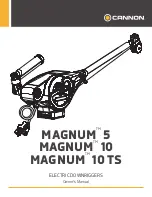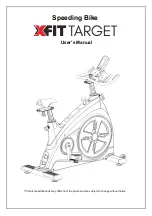
4.5 RESCUE BY APPROACH OF THE RESCUER
TO THE PERSON TO BE RESCUED
The descender and rescue lifting device also allows
a rescuer to descent directly to the person to be
rescued, attach the person and then lift both the
rescuer and the rescued to detach the lanyard
securing the rescued person; thereafter both will
descend together. This type of rescue action may
only be undertaken by persons who have been
specifically trained to do so and have correspon-
ding knowledge.
After the rescue action, the rescuer must ensure
that the equipment is removed from use, and
turn it in for inspection, maintenance or revision.
5. MAINTENANCE, STORAGE, TRANSPORT
AND REPAIR
Upon use clean the descender device and the
descent rope if necessary. Clean it with a lot of
water (at 40 °C). If the device has become wet
during use or due to the cleaning, dry it. Dry it
exclusively by natural convection, that is, not near
any fire or other heat sources. Store the descender
device and the descent rope in a well ventilated,
shady and dry room. To prevent damage during
transport or storage, the equipment should be
stored in its storage bag or a transport crate.
Contact with high humidity, heat, chemicals - espe-
cially with acids, aggressive liquids, and with oils
must be prevented. If any of these are unavoidable,
be sure to contact the manufacturer. If the equip-
ment needs to be disinfected, please also contact
the manufacturer.
Repairs must be made exclusively by the manufac-
turer or a person authorised by the manufacturer;
repair instructions must be followed carefully.
Descender devices that are permanently installed in
a workplace and remain in a specific position bet-
ween the inspections, must be protected from
environmental influences by suitable measures (e.g
by use of a rescue vat).
The rescue equipment should be stored in a clearly
identified location, it should be ready for immediate
use in an emergency.
Damaged equipment or equipment needing mainte-
nance must by no means be stored in the same
location with equipment that is ready for use.
Equipment that has been stored for a longer period
and has not be used (for more than one year) must
be inspected carefully by an adequately qualified
person. (Exception: storage in a sealed vat)
Extremely wet or contaminated equipment must be
maintained before it is stored (drying and/or
cleaning).
6. INSPECTION OF RESCUE EQUIPMENT
The rescue equipment shall be checked by the res-
cuer/user before every use; additionally, it shall be
inspected once every 12 months by an adequately
qualified person (not the rescuer/user). The inspec-
tion criteria shall be set by the management of the
enterprise using the equipment. These criteria shall
duplicate or be more stringent than the normative
requirements or the requirements set by the manu-
facture of the equipment. The inspection criteria
must be adapted to the different application scena-
rios.
The background of performing a double-check of
the equipment is the acquisition of two different
opinions concerning the detection and remedy of
damage, malfunction or bad maintenance of the
equipment. If such deficiencies are detected by the
Summary of Contents for SAFE DESCENT
Page 1: ...SAFE DESCENT SAFE DESCENT...
Page 2: ...Abb fig ill afb fig rys A B C E F A D 1...
Page 3: ...G J I H 2...
















































